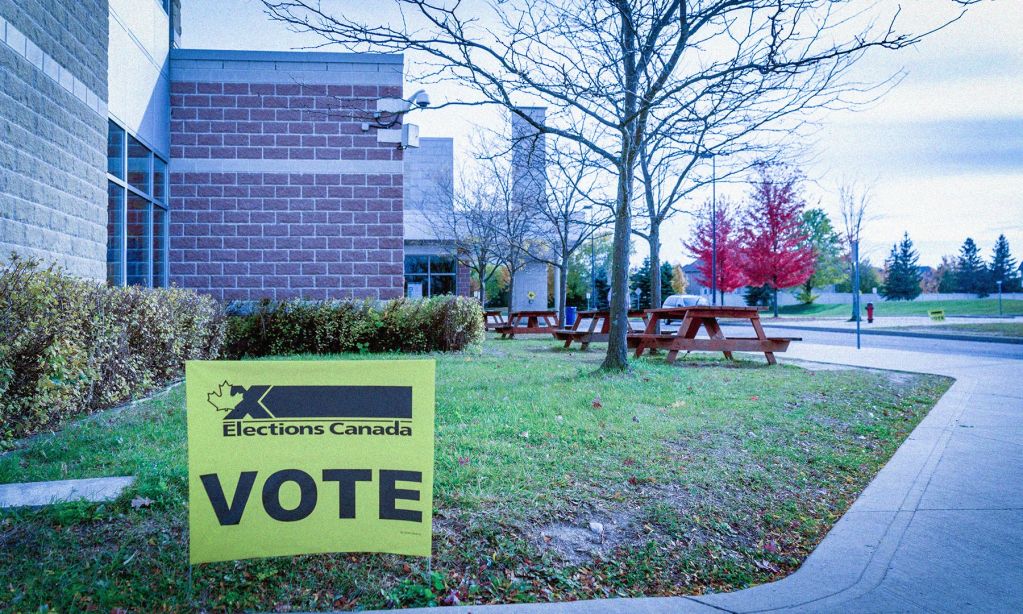No consensus. That’s how Justin Trudeau explained his decision to abandon the electoral reform file in 2017, following one of the most extensive consultation processes in Canadian history.
Yet there was a quite broad consensus on the need for reform by the experts who testified and the huge numbers of Canadians who took the mic across the country. What the PM really meant was a lack of consensus among politicians, across parties, and most likely within the Liberal Party itself, about the exact way forward.
What then of recent moves to develop the consensus the PM claims to be looking for? Why not convene a citizens’ assembly on electoral reform, give a representative body the resources and the time they need to deliberate on the issues and options and come up with a consensus on what citizens themselves would like?
In May 2023, delegates at the Liberal Party Convention delegates voted on a resolution exactly along these lines, calling for a citizens’ assembly on electoral reform. That resolution not only passed. It was prioritized 11th of all the resolutions submitted to the Convention for consideration. This means a citizens’ assembly on electoral reform immediately became Liberal policy for the next eight years.
With the Liberals down in the polls, one might have thought a citizens’ assembly would be a good move politically, helping to get the albatross of the broken promise on electoral reform off the Liberals’ back and inspiring now-cynical voters anew.
Yet when a private members bill—Motion M-86: Citizens’ Assembly on Electoral Reform—was put to a vote in parliament on Feb. 7, that motion failed, 220 to 102.
All-party support for Motion M-86
The 102 votes in favour tell an eloquent story, because of the all-party support that they represent: two Greens, three independents, three Conservatives, 24 NDP, 30 BQ and 40 Liberals. Considering that the governing cabinet had recommended against this motion as long ago as early November 2023, the vote was extraordinarily supportive.
Most of those who voted against the motion were members of the Liberal cabinet and Conservative shadow cabinet, accounting for 115 votes against and only one in favour (Ben Lobb for the Conservatives). The vote among remaining MPs was virtually tied at 101 in favour to 105 against. It’s clear that opposition to a citizens’ assembly on electoral reform did not come primarily from the grassroots or even backbencher MPs, but from the party leadership—from Pierre Poilievre, whose power in a future government would be diminished under a proportional voting system, and Justin Trudeau, who claims to want a consensus, but is not prepared to trust citizens to arrive at that consensus.
That’s what the movement for electoral reform is up against—politicians who don’t want a consensus if that might dilute their power. In this vote, it was ordinary MPs who were prepared to vote for a more democratic approach on the issue of electoral reform.
Those with power did not bother to respond. In Pierre Poilievre’s riding, constituents collected about 600 petition signatures for submission to the opposition leader. Yet Poilievre refused to meet with constituents on this issue and refused to table the petition in the House of Commons.
However, let’s not make the mistake of believing that backbenchers will always be supportive. In Quebec, leaders’ promises to bring in electoral reform have been left to die on several occasions under three different parties: the Parti Québécois, the Liberals and Coalition Avenir Quebec (CAQ). And while the leadership was part of those reversals, in each case, loss of support among backbenchers was a major factor.
The fact is that if you change the electoral system, some of those who were elected under the old system will lose their seats. It is these people and their colleagues who oppose electoral reform.
Openings looking forward
One wonders how other countries ever managed to get electoral reform under such circumstances, considering that most OECD countries made that transition decades ago! Today, 80 per cent of OECD countries have some form of proportional representation. The short answer is that one gets electoral reform when the dominant two-party duopoly comes under threat. We are not going to get electoral reform federally in Canada until the Liberal-Conservatige duopoly itself is seriously threatened.
We’ve been close to a breakthrough before, notably in 2014, when the Liberals found themselves in third place behind the NDP. Hence the famous promise by Liberal leader Justin Trudeau to “make 2015 the last FPTP election.” A promise that mysteriously disappeared due to “lack of consensus” two years later.
This sort of breakthrough could happen again, with the Liberals fading in the polls. Unfortunately, if the vote on M-86 is any indication, the Liberal Party leadership appears unable to see the longer-term picture and dig itself out from under the broken promise.
Shifting gears
Advocates of electoral reform will continue to advocate for a national citizens’ assembly to be sure. There’s always hope that the Liberal leadership will see the light and realise they have nothing to lose by giving a voice to citizens.
There’s hope as well for a positive resolution of the Charter Challenge against the Canadian Elections Act as another possible path forward. That challenge was heard by a judge of the Superior Court of Ontario last November, who ruled against it, but an appeal has been submitted by the applicants. There’s a strong case to be made that First-past-the-post violates citizens’ rights to equal protection under the law, considering that all votes are not equal when some votes are little more than symbolic while others help to elect swing candidates needed to form government.
However, the greatest odds of success are at the provincial level where the two-party system is most under siege.
Quebec stands out as a province which should have achieved electoral reform long ago. Results of the last election were particularly bizarre, as four different parties secured vote shares in the range of 13-15%, yielding seat shares that went from zero for the Quebec Conservatives to 2.4 per cent for the Parti Québécois, 8.8 per cent for Quebec Solidaire and 16.8 per cent for the Quebec Liberals. Quebec had its first formal bill on electoral reform in 2019 under the CAQ before the government killed it in late 2021. However, that bill has now been improved upon and resubmitted by the opposition. With the CAQ way down in the polls there’s no telling what the future will bring in Quebec.
Yukon tells a similarly interesting story. Here is a territory with three viable parties, not two, and a current minority Liberal government supported by the NDP. That territory is well on the way to establishing a citizens’ assembly on electoral reform at this very moment.
There’s also New Brunswick where the Conservative-Liberal duopoly was challenged in 2018 when the Greens and People’s Alliance each managed to win seats. With the People’s Alliance having folded itself into the Conservative Party, a lot may depend on the ability of the Green Party to hang on to the beachhead it established. There’s an election coming up in September 2024 and Liberal leader Susan Holt has expressed her personal support for both proportional representation and the citizens’ assembly idea.
We come, finally, to Canada’s largest province, Ontario, where the two-party duopoly was challenged long ago and the Ontario Liberals were severely pummeled by our first past the post system in the last two elections. Doug Ford will have had two false majority terms of government by the time the next election comes around. Meanwhile, both the NDP and the Liberals have new leaders and the odds are fair that we will end up in a minority government situation. A citizens’ assembly would be a good way to reach a consensus way forward on electoral reform at that point.
There continues to be “no consensus” among the federal party elites of the Liberal and Conservative parties. That does not mean giving up on electoral reform.
However, electoral reform federally could be dead in the water for some time should the Conservatives form a majority government in 2025. Our best hope would be for a weakened Liberal minority with stronger representation by the NDP and the Greens.
The immediate opportunities lie elsewhere, in Quebec, Yukon, New Brunswick and Ontario. Civil society organizations advocating for electoral reform are working hard to promote the electoral reform agenda in all of those arenas.







